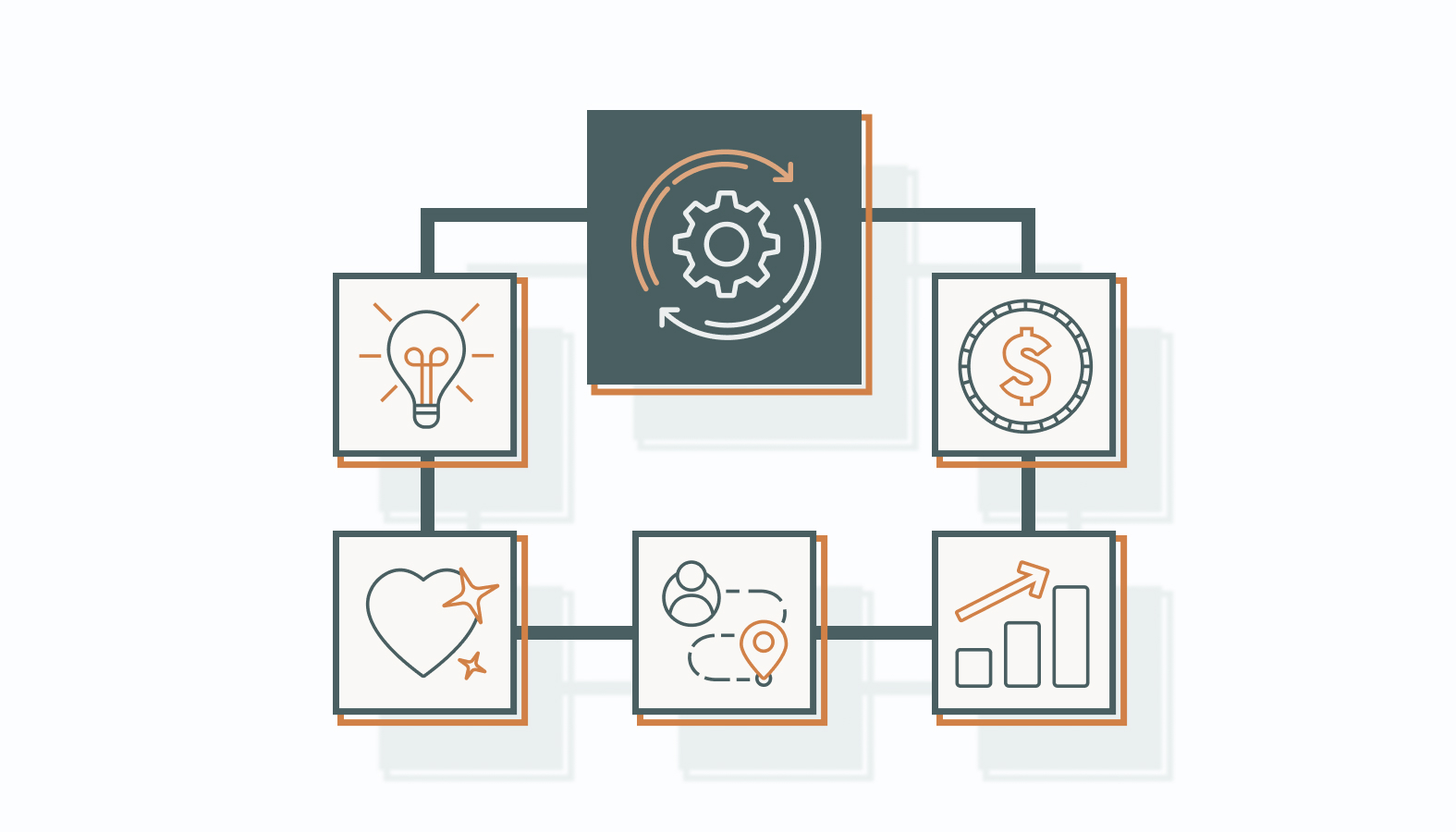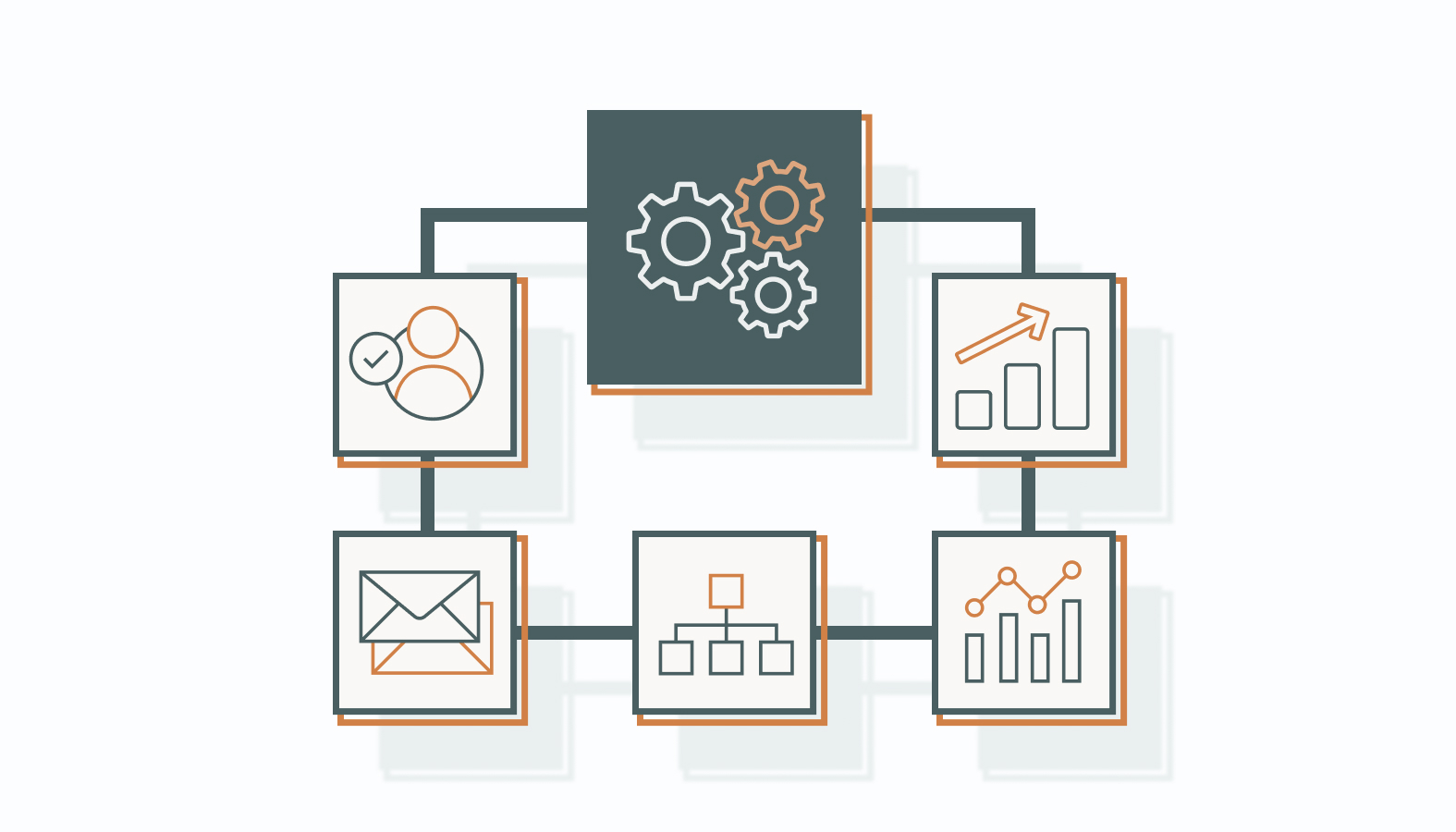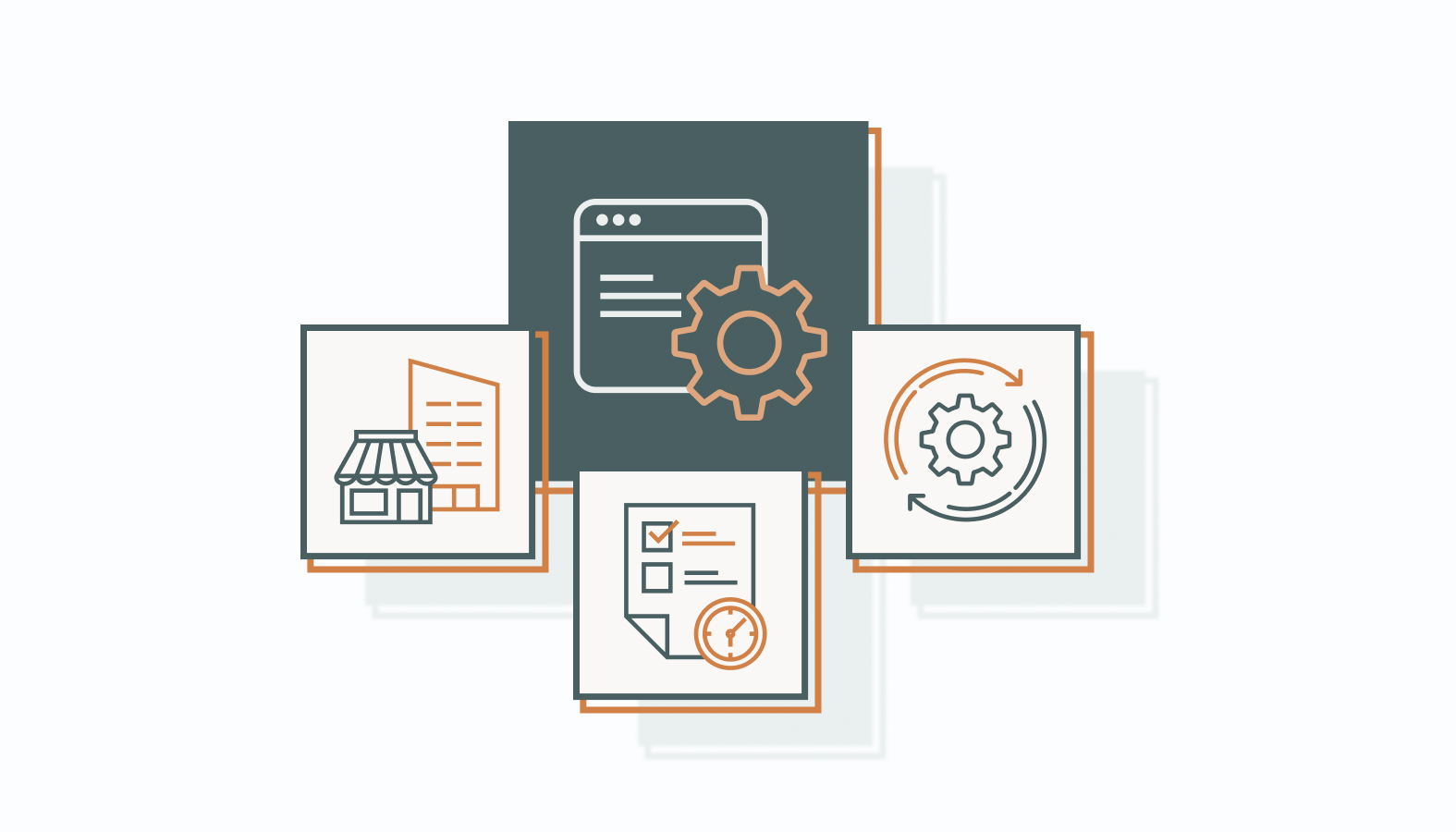B2B marketing moves fast, and it’s not slowing down. But your team shouldn’t be stuck babysitting spreadsheets or juggling half-baked workflows. The most effective companies aren’t just using marketing automation to save time — they’re using it to scale smarter, engage deeper, and drive measurable growth.
At this point, automation is no longer a nice-to-have but the foundation of efficient, data-informed marketing. When implemented well, it frees your team from low-value tasks so they can focus on work that drives significant results.
The problem? Too many tools and too little clarity. Features blur together, and promises sound the same. Also, picking the wrong platform can waste more than just budget; it can stall your momentum.
This guide is your shortcut. We’ll walk through what B2B marketing automation does, how it sharpens performance across the funnel, and which platforms are worth your attention in 2025 so you can align the right tech with your goals, team, and budget without trial and error.
Advantages of B2B Marketing Automation
Marketing automation uses data and behavioral insights to remove uncertainty. You’re not just sending emails on a schedule. You’re building intelligent systems that adapt in real-time, targeting, segmenting, and personalizing at scale.
Automation does more than sharpen strategy. Here’s how it strengthens every stage of your B2B marketing.
1) Driving Lead Generation Efficiency
Lead generation thrives on speed and accuracy. Automation handles repetitive tasks like form tracking, list segmentation, and lead scoring with far more reliability than manual workflows. That frees up your team to focus on strategy and creative work.
Modern automation tools use AI to evaluate engagement signals and surface your most sales-ready leads. Instead of chasing every prospect, your team can prioritize the ones most likely to convert.
2) Intelligent Lead Nurturing Processes
Every lead is on a different timeline. Automation lets you meet them where they are. With behavior-based triggers and personalized workflows, you can deliver timely, relevant content that guides each lead closer to a decision.
You’re not just following up. You’re nurturing with context and consistency, building familiarity, trust, and momentum with every touchpoint.
3) Scalable Customer Engagement
Once you’ve opened the door, automation keeps the conversation going. Multi-channel campaigns (email, SMS, social, and beyond) stay coordinated, personalized, and on-brand without stretching your team thin.
You maintain visibility across platforms and keep your audience engaged long after the first click. This consistent presence boosts retention, drives upsells and turns customers into advocates.
4) Boosting Conversion Rates
Automation platforms come with built-in analytics that do more than count clicks. They show you what’s working, what’s not, and where leads are dropping off.
With that intel, you can refine your nurture paths, test calls to action, and dial in your content strategy. The result? Smoother conversion journeys and better ROI.
5) Cost Efficiency that Scales
Time is money, and automation buys both. By reducing manual labor and eliminating inefficiencies, companies can reallocate resources to high-value efforts like strategy, creativity, and growth.
Many real-world use cases show strong ROI from marketing automation, especially in industries where long sales cycles and complex buyer journeys require sustained, high-quality engagement.
Selecting the Right Platform: Key Features to Evaluate
Choosing the right B2B marketing automation platform can significantly impact your overall marketing success. Here’s what separates high-performing tools from the hype.
Lead Management: Streamline, Score, and Close
Strong lead management is the fuel line to your sales engine. Your platform should give you precise control over how leads are captured, qualified, and handed off.
Look for features like:
- Lead scoring models that weigh engagement levels, firmographics, and behavioral data
- Automatic lead routing based on sales territory, product interest, or deal size
- Customizable lifecycle stages so you can track leads from awareness to opportunity
- Lead deduplication and data hygiene tools to keep your CRM from turning into digital spaghetti
If your sales team spends more time sifting through junk than closing deals, your automation stack needs a serious upgrade.
Email Marketing: Streamlined Campaigns, Higher ROI
Email still delivers the highest ROI of any B2B channel. The right platform lets you hit send with surgical accuracy instead of blind targeting.
Prioritize platforms with:
- Workflow builders for trigger-based drip campaigns and nurture tracks
- List segmentation tools that let you target by persona, behavior, or stage in the buyer journey
- Merge fields and dynamic content to personalize every message at scale
- A/B testing frameworks to optimize subject lines, CTAs, and email structure
- Deliverability monitoring so you’re not just creating compelling emails but actually landing them in inboxes
Thoughtful automation doesn’t blast. It tailors, times, and tests on repeat.
Integration: Centralized Systems, Decentralized Chaos Avoided
Marketing doesn’t live in a silo, and neither should your tech. If your automation platform can’t speak to your CRM or analytics tools, you’re flying blind.
Critical integration features include:
- Native connectors to Salesforce, HubSpot, Pipedrive, or your CRM of choice
- REST APIs or webhooks to plug into custom tools and external platforms
- Third-party integrations via Zapier, Make, or middleware for added flexibility
- Bi-directional data sync so updates flow in real-time, both ways
Bonus: The fewer manual imports your team has to do, the fewer hours they’ll spend cleaning up broken reports.
Reporting and Analytics: Insight Over Instinct
If you can’t measure it, you can’t improve it. Your automation platform should turn performance data into action, not confusion.
Look for analytics capabilities such as:
- Campaign dashboards that show engagement by channel and audience segment
- Attribution modeling to connect content and campaigns to pipeline results
- Conversion funnel tracking to spot where leads drop off and why
- Predictive analytics for lead scoring, campaign outcomes, and revenue forecasting
Reporting shouldn’t require a data scientist or an act of faith. It should give your team clarity at a glance and direction at every level.
Scalability and Flexibility: Built for the Future
Choose a platform that grows with you, not one you’ll outgrow by next quarter.
Assess platforms based on the following:
- User permissions and multi-team support for organizations with layered roles and workflows
- Custom object support to model your business data properly, not just force-fit it
- Workflow customization that adapts to your sales cycle, approval process, or buying journey
- Load-tested infrastructure that performs under pressure, whether you’ve got 1,000 leads or 100,000
Scalable tech isn’t bloated. It’s lean, agile, and powerful enough to support your growth curve without constant patching.
Emerging Trends in B2B Marketing Automation
B2B marketing automation is evolving fast. Here’s what’s pushing the frontier in 2025:
AI That Thinks Ahead
AI has moved far beyond lead scoring. Today, it forecasts buyer behavior, prioritizes sales outreach, and fine-tunes content in real-time based on actual engagement.
Predictive analytics and dynamic content personalization turn static campaigns into adaptive, performance-driven experiences.
Intent Data, Activated
Forget cold outreach. Intent signals, such as specific search behavior, content engagement, or competitor activity, give marketing teams real-time visibility into who’s actively researching.
When plugged into automation, these signals trigger perfectly timed, hyper-relevant campaigns that move leads faster and smarter through the funnel.
Conversational Automation at Scale
Chatbots have graduated from glorified FAQs to strategic teammates.
Today’s bots qualify leads, handle complex questions, and even book meetings without dropping the ball or losing the human touch. Integrated into your workflows, modern chatbots deliver instant engagement and continuous insight, even while your team sleeps.
These innovations are fast becoming the baseline for scalable, intelligent B2B growth. As you compare platforms, examine their product roadmaps to see if these capabilities are on the horizon or already in motion.
Leading B2B Marketing Automation Platforms for 2025
Choosing a marketing automation platform in 2025 is less about bells and whistles and more about execution. These five platforms have earned their place through measurable performance, user experience, and the ability to grow with your business.
Brevo Overview
Brevo has quietly evolved into a strong contender in the mid-market space. It combines ease of use with enough power under the hood to serve serious marketers.
While it began as a simpler email marketing tool, its recent platform enhancements have positioned it as a capable all-in-one marketing automation solution for SMBs.
Strengths
- Clean, intuitive UI that doesn’t require a steep learning curve
- Strong email campaign engine with personalization and A/B testing
- Flexible workflows for lead nurturing
- Budget-friendly for growing companies
Weaknesses
- Reporting and analytics are serviceable but not deep
- Less suited for enterprise-level operations or complex integrations
Best For: SMBs and mid-sized businesses looking for reliable automation, especially those who prioritize email marketing but don’t want to get bogged down in technical setup.
Brevo is particularly well-suited for ecommerce, service-based businesses, and lean marketing teams seeking fast wins and manageable complexity.
HubSpot Marketing Hub’s Capabilities
HubSpot made its name on inbound marketing and hasn’t stopped refining the art. Its unified ecosystem gives marketers, sales, and support teams a shared view of the customer journey.
HubSpot effortlessly connects data, content, and automation across the whole funnel, from the first touch to renewal and advocacy.
Strengths
- Seamless CRM and automation integration
- Incredibly user-friendly for teams of all skill levels
- Extensive educational resources and onboarding support
- Continual innovation across the entire customer lifecycle
Weaknesses
- Gets expensive fast as contact lists grow
- Can become limiting for companies needing highly customized workflows
Best For: B2B companies looking for a polished all-in-one platform that integrates marketing, sales, and service without needing IT to get involved.
HubSpot is particularly valuable for growing companies that want to build scalable, insight-driven customer journeys while maintaining operational simplicity. It’s also ideal for organizations that value a strong support ecosystem and want to upskill their teams alongside platform adoption.
Adobe Marketo Engage Features
Marketo doesn’t play small. It was built for enterprises and excels when your campaigns get complex, and your audience segments get granular.
Marketo’s strength lies in orchestration: coordinating sophisticated journeys across email, web, events, and paid channels while adapting in real-time to behavioral data. This makes it a favorite for marketing teams demanding scale and precision.
Strengths
- Deep customization and advanced lead scoring
- Strong ABM (Account-Based Marketing) and buyer journey tools
- Rich analytics and predictive AI for better targeting
- Integrates well with enterprise ecosystems
Weaknesses
- High barrier to entry in terms of cost and implementation
- UI can feel dated and non-intuitive for new users
Best For: Enterprise B2B teams running high-volume, multi-touch campaigns across multiple channels and those with the talent to unlock Marketo’s full potential.
Marketo’s ideal for mature organizations with complex sales processes, dedicated marketing ops teams, and the need for deep segmentation, data fidelity, and long-term scalability.
Salesforce Marketing Cloud Account Engagement (formerly Pardot)
Backed by the Salesforce CRM backbone, this platform is ideal for businesses that want marketing and sales to work from the same source of truth. Its native integration ensures seamless data sync across departments, enabling highly personalized outreach and faster follow-up at every buyer journey stage.
For organizations prioritizing revenue operations (RevOps), Salesforce’s platform becomes more than just a marketing platform—it’s a pipeline visibility engine.
Strengths
- Robust lead nurturing and scoring tied directly to Salesforce
- Granular campaign tracking and attribution
- Excellent for sales-marketing alignment
- Advanced data modeling and audience segmentation
Weaknesses
- Complex setup that often requires partner support
- Less intuitive for marketers used to plug-and-play solutions
Best For: Sales-driven organizations already on Salesforce CRM that need scalable lead management, pipeline acceleration, and real-time sales insights. Ideal for B2B companies with mature sales processes, tight RevOps collaboration, and a need for deep campaign attribution within a centralized CRM ecosystem.
ActiveCampaign’s Offerings
Don’t let its modest branding fool you. ActiveCampaign delivers serious automation power and focuses on customer experience and retention. It blends marketing automation, email, and CRM into a tightly connected platform to help businesses punch above their weight.
For brands that rely on relationship-building and ongoing engagement, ActiveCampaign provides the tools to craft journeys that feel personalized at scale.
Strengths
- Dynamic automation builder with fine-grained controls
- Smart segmentation and personalization
- Built-in CRM for sales-marketing coordination
- Affordable pricing tiers with enterprise features
Weaknesses
- UI can be clunky as your campaigns grow
- Not ideal for companies needing extensive third-party integrations
Best For: Service-based businesses, agencies, and e-commerce brands focused on customer lifecycle marketing and building automated retention journeys. Particularly effective for teams that value agility and want to build advanced automation without enterprise overhead.
Which Platform is Right for Your Business?
Skip the popularity contest. The best platform is the one that connects your marketing efforts directly to business outcomes seamlessly, intelligently, and without wasted motion.
Here’s how to pick it:
- Match to Your Marketing Maturity
Are you running basic email blasts or orchestrating complex multi-channel campaigns?
A small team with limited automation experience will benefit from the ease of use of tools like Brevo or ActiveCampaign.
Meanwhile, enterprise teams should prioritize extensibility and advanced segmentation offered by Marketo or Salesforce.
- Prioritize Integration Capabilities
A great automation platform should be a hub, not a silo. Evaluate native integrations with your CRM, CMS, and analytics stack.
Poor integration leads to data delays, inconsistent messaging, and missed opportunities, especially at scale.
- Assess Usability for Your Actual Team
Flashy features mean nothing if your team won’t use them. Demo platforms with the people who will build campaigns, not just leadership.
Choose the tool that empowers your team, not the one that intimidates them.
- Plan for the Future, Not Just Today
Growth means complexity. Can the platform support multiple brands, regions, or business units?
Check for support of custom objects, multi-domain workflows, and API access. Future-proofing saves costly migrations later.
- Consider Total Cost of Ownership
Look beyond the licensing fee. Factor in training, support, integrations, and the cost of underutilization. Often, a pricier platform pays for itself with faster results.
If it doesn’t bring you closer to revenue, it’s not a solution; it’s a distraction.
How to Implement B2B Marketing Automation
Picking the platform is just one piece of the puzzle. Implementation is where the strategy either accelerates or stalls.
Here’s how to roll out B2B marketing automation that drives ROI.
1. Audit Your Current Marketing Ecosystem
Before you automate anything, you need to understand what’s working, what’s manual, and what’s missing. Start by:
- Mapping out your existing campaigns, touchpoints, and handoffs.
- Identifying repetitive, time-consuming tasks (think follow-ups, segmentation, lead scoring).
- Pinpointing data silos, gaps in personalization, or missed opportunities in nurture flows.
This isn’t busywork; it’s diagnostic. It helps you spot where automation will create the most leverage.
2. Set Goals That Connect to Revenue, Not Just Activity
Automation is all about doing more but a LOT better. Set crystal-clear objectives tied to business outcomes:
- Increase lead-to-opportunity conversions by X%.
- Reduce manual campaign deployment time by Y%.
- Improve email open and click-through rates by Z%.
Tie these goals to KPIs that leadership wants to hear. If it doesn’t move the revenue needle, it’s a nice-to-have, not a must-have.
3. Select a Platform That Aligns with Your Growth Trajectory
Don’t fall for enterprise feature bloat. Look for platforms that:
- Solve your current problems without becoming obsolete next year.
- Integrate seamlessly with your CRM, CMS, and data sources.
- Offer scalability and extensibility, especially if planning multi-brand or multi-region campaigns.
Run demos with real use cases. Have your team test it, break it, and ask the questions that sales reps gloss over. You’re not just choosing software. You’re selecting an infrastructure partner.
4. Design Workflows with the End User in Mind
Too many automation rollouts are done in a vacuum: built for the platform, not the buyer.
Instead:
- Map workflows to actual buyer journeys.
- Think beyond email: include SMS, retargeting, chatbots, and dynamic content.
- Set up conditional logic that personalizes content based on behavior and data, not just demographics.
Automated doesn’t mean robotic. Your flows should feel like 1:1 conversations, not one-size-fits-all blasts.
5. Plan for Change Management and Training
A tool is only as good as the team using it. Go beyond basic onboarding:
- Create role-specific training for marketing ops, sales, and content teams.
- Set up internal champions who can field questions and champion adoption.
- Schedule post-launch health checks at 30, 60, and 90 days to track adoption and performance.
People don’t resist automation; they resist confusion. Clear training + fast support = smooth rollout.
6. Build a Governance Model to Keep Automation Clean and Compliant
Even the best systems degrade without discipline. As your automation strategy matures:
- Establish naming conventions and folder structures.
- Set rules for contact segmentation, lead scoring, and trigger logic.
- Review automations quarterly to remove redundancy, reduce bloat, and stay compliant with evolving data privacy laws (GDPR, CCPA, etc.).
Governance isn’t just for enterprise giants. It protects performance and future-proofs your workflows.
7. Test, Measure & Optimize Relentlessly
No workflow should be static. Build a culture of experimentation:
- A/B test subject lines, timing, content blocks, and cadence.
- Use performance dashboards to surface campaign bottlenecks.
- Feed insights back into your strategy and creativity.
Automation doesn’t mean “set it and forget it.” It means “set it, monitor it, and improve it every quarter.”
Automation That Works, Platforms That Scale
Effective B2B marketing automation isn’t just a tech rollout. It’s a shift in how your team works, thinks, and scales. Get the strategy right, and automation becomes a growth engine. Skip the fundamentals, and you’ll have a shiny system gathering dust.
Automating your B2B marketing strategies is about building systems that multiply your team’s impact without burning them out. The right platform does more than send emails or track clicks. It becomes the operational core of generating leads, nurturing relationships, and creating repeatable, measurable growth.
And here’s the truth: execution is everything. The companies winning with automation are the ones who get the process right. They align tools to real goals, design workflows around the buyer journey, and invest in adoption.
Automation isn’t a one-and-done setup. It’s a performance framework that evolves with your business. Review what’s working, optimize what isn’t, and never automate what you don’t understand.
Want to win at automation? Start with the process. Scale with purpose.
If you’re ready to turn automation into a competitive advantage, now’s the time. Schedule a candid conversation with one of our experts. We’ll help you tighten your systems, eliminate friction, and unlock what automation can truly do for your business.









